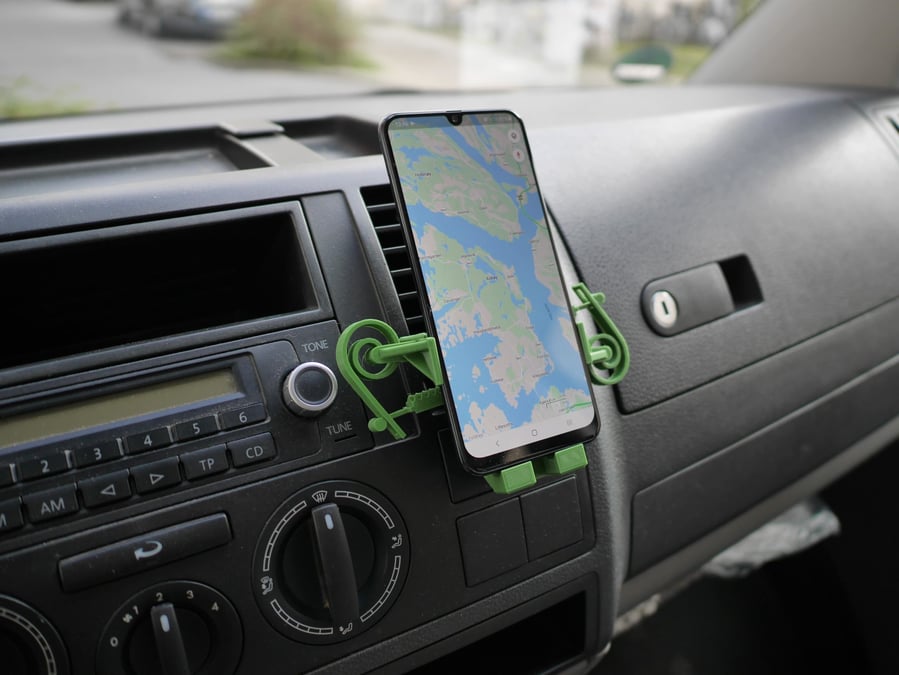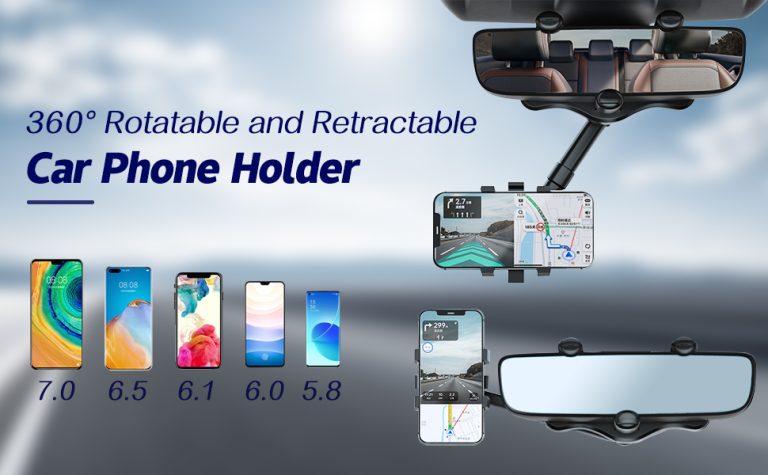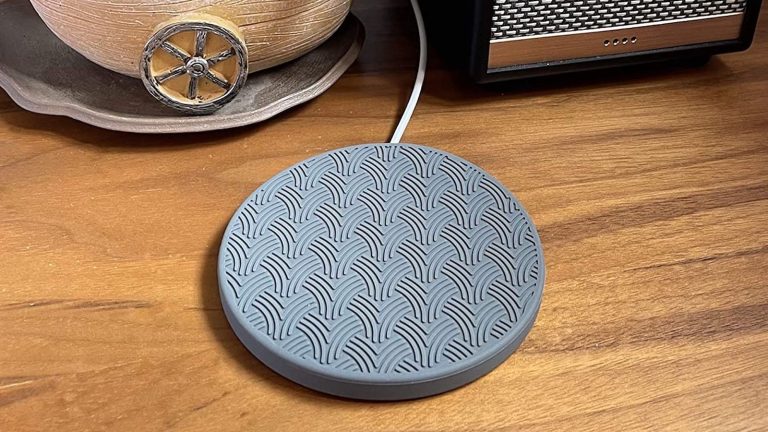The Ultimate Guide to Making 3D Printed Car Phone Holders: Innovative Techniques, Tips, and Designs
In a world where technological advancements seemingly know no bounds, 3D printing continues to expand its reach and revolutionize various industries. From medical breakthroughs to architectural marvels, this cutting-edge technology has captivated the imagination of innovators and consumers alike.
Join us on a journey of discovery as we delve into the realm of 3D printing, exploring its potential in diverse fields. From Triastek’s groundbreaking in-human study of 3D printed medication, to Joseph Crabtree’s visionary work in the field, and California’s first 3D printed home offering hope to wildfire victims, we’ll uncover the transformative power of this incredible technology.
Strap yourself in as we navigate the exciting world of 3D printing and uncover its endless possibilities.
3d printed car phone holder
A 3D printed car phone holder is a convenient accessory that allows drivers to securely mount their smartphones in their vehicles. It is designed using 3D printing technology, which offers the flexibility to create custom shapes and sizes.
This enables the car phone holder to fit different phone models and car types. The 3D printing process allows for the use of various materials, such as plastics or metals, providing durability and strength to hold the phone in place while driving.
The 3D printed car phone holder is a practical and innovative solution for keeping phones accessible and safe during car journeys.
Key Points:
- 3D printed car phone holder securely mounts smartphones in vehicles
- Custom shapes and sizes can be created using 3D printing technology
- Fits different phone models and car types
- Various materials can be used for durability and strength
- Keeps phones accessible and safe during car journeys
- Practical and innovative solution
Sources
https://www.thingiverse.com/tag:car_phone_holder
https://www.yeggi.com/q/car+phone+holder/
https://www.3dsourced.com/guides/3d-printed-phone-stands/
https://cults3d.com/en/collections/best-stl-files-phone-holder
Check this out:
💡 Pro Tips:
1. Customize your phone holder: With 3D printing, you have the freedom to design and create a custom car phone holder that perfectly fits your phone and car interior.
2. Material selection is crucial: When 3D printing a car phone holder, consider using a strong and durable material, such as ABS or PETG, to ensure that the holder securely holds your phone while driving.
3. Optimize for convenience: Take advantage of the flexibility of 3D printing to incorporate additional features into your car phone holder, such as a charging port or a space for holding small items like keys or coins.
4. Test before use: Once you have 3D printed your car phone holder, thoroughly test its stability and practicality before using it on the road. Make sure it securely holds your phone and doesn’t obstruct your view while driving.
5. Share and improve: If you come up with an innovative design for a 3D printed car phone holder, consider sharing it with the 3D printing community. Collaboration and feedback can help you improve your design and create an even better product.
Bridging In 3D Printing: Tips To Avoid It
When it comes to 3D printing, one common challenge is bridging, which refers to creating unsupported structures or spans between two solid surfaces. Bridging can be tricky because the molten plastic filament tends to sag or droop before it solidifies, resulting in a flawed print.
However, with the right techniques, you can easily avoid this issue. Here are some tips to help you achieve successful bridging in your 3D prints:
- Use a supportive structure: One effective way to prevent sagging during bridging is to utilize a supportive structure called a “bridge support.” This can be achieved by enabling support structures in your slicing software.
These temporary supports provide a solid foundation for the molten filament to bridge across.
- Decrease the printing speed: Slowing down the printing speed can greatly improve the quality of your bridges.
By reducing the speed, the filament has more time to cool and solidify, minimizing the chances of drooping or sagging.
- Optimize cooling settings: Proper cooling is crucial for bridging success.
Ensure that your printer’s cooling fan is operating optimally, as it helps to quickly cool down the filament. Additionally, adjusting the cooling settings in your slicing software can also be helpful in achieving better bridging results.
- Proper filament selection: Different filaments have varying properties, which can affect their bridging capabilities.
It is recommended to choose filaments that have good bridging characteristics, such as PLA or PETG. These filaments tend to bridge well due to their low viscosity and good adhesion properties.
Remember, bridging can be challenging, especially when dealing with long spans or complex geometries. Don’t hesitate to experiment with different settings and techniques to find the best approach for your specific print.
Joseph Crabtree: Leading The Way In 3D Printing Innovations
In the world of 3D printing, Joseph Crabtree stands out as a pioneering figure, revolutionizing the field with his innovative ideas and groundbreaking advancements. With his deep knowledge of additive manufacturing and a passion for pushing its boundaries, Crabtree has made significant contributions to the industry.
One of Crabtree’s notable achievements is the development of a cutting-edge 3D printed medication. Through extensive research and in-human studies, his company, Triastek, has successfully completed the development of a 3D printed medication that offers precise dosages tailored to individual patients.
This breakthrough technology has the potential to revolutionize the pharmaceutical industry by providing personalized medication solutions.
Crabtree’s work has not been limited to pharmaceuticals. He has also made notable strides in bridging the gap between 3D printing and other industries.
His efforts to explore the applications of 3D printing in various sectors, such as aerospace, automotive, and healthcare, have opened up new possibilities and spurred further innovation.
California’s First 3D Printed Home For Wildfire Victims
Amidst the devastating wildfires that has plagued California in recent years, a glimmer of hope emerges in the form of the state’s first 3D printed home. This remarkable development brings renewed optimism and relief for those who have lost their houses to the destructive infernos.
The 3D printed home, constructed by a team of skilled engineers and architects, showcases the potential of additive manufacturing in the field of construction. Built using a combination of sustainable materials and cutting-edge 3D printing technology, the home not only offers a safe and resilient refuge for wildfire victims but also highlights the possibilities of rapid, cost-effective, and environmentally friendly housing solutions.
The use of 3D printing in constructing homes has several advantages. It allows for greater design flexibility, enabling the creation of unique and customized structures.
Additionally, the speed of 3D printing significantly reduces construction time, making it an ideal solution for rebuilding communities affected by natural disasters.
California’s first 3D printed home serves as a beacon of hope, showcasing the potential of this innovative technology to make a positive impact in the face of adversity.
KraussMaffei’s PowerPrint: Printing Large-Scale Parts
Breaking the boundaries of traditional 3D printing, KraussMaffei’s PowerPrint technology has revolutionized the production of large-scale parts. With the ability to 3D print parts up to 10 cubic meters in size, PowerPrint opens up new possibilities for various industries, including automotive, aerospace, and construction.
The key to PowerPrint’s success lies in its innovative industrial-scale 3D printers and advanced materials. These printers utilize a combination of high-speed extrusion and precise layering techniques to create complex and durable components.
The use of specialized thermoplastic materials further enhances the strength and functionality of the printed parts.
The advantages of PowerPrint extend beyond its large print size capabilities. It also enables the production of lightweight structures, reducing material waste and improving the overall efficiency of the manufacturing process.
Additionally, the ability to 3D print intricate geometries and consolidate multiple components into a single part offers greater design freedom and eliminates the need for costly assembly processes.
KraussMaffei’s PowerPrint technology marks a significant milestone in the evolution of additive manufacturing, bringing large-scale 3D printing capabilities to the forefront of industrial production.
PAMA’s Expert Advice: Safe Handling Of 3D Printing Resins
As the popularity of 3D printing continues to grow, it is essential to prioritize safety when working with 3D printing resins. The Printing Additive Manufacturing Association (PAMA) provides expert advice on how to handle these materials responsibly, ensuring the well-being of both users and the environment.
PAMA emphasizes the importance of proper ventilation when working with 3D printing resins. These resins often emit volatile compounds during the printing process, which can be harmful if inhaled in excessive amounts.
It is crucial to operate in a well-ventilated area or use specialized extraction systems to minimize exposure to these compounds.
Furthermore, PAMA recommends wearing appropriate personal protective equipment (PPE), such as gloves and safety goggles, to prevent direct contact with the resins. Skin sensitization or irritation can occur when handling certain resins, so taking necessary precautions is vital.
Proper disposal of used resins is another aspect highlighted by PAMA. Improper disposal can have negative environmental consequences, so it is essential to follow local regulations and dispose of resins responsibly.
This may involve contacting specialized waste management facilities or using resin-specific disposal methods.
By adhering to PAMA’s expert advice, 3D printing enthusiasts can enjoy the creative possibilities of additive manufacturing while ensuring safety and sustainability in their practices.
DIY Space Mouse: Design Process And Features
Discover the fascinating world of DIY space mouse design, a project that combines the principles of 3D printing and innovative electronics. This unique device utilizes a 3-axis magnetometer and the RP2040 microcontroller, offering an affordable and customizable solution for space enthusiasts.
The design process of the DIY space mouse involves utilizing CAD software to create the ergonomic shape of the mouse and incorporating the necessary components. By designing and 3D printing the outer casing, users can customize the appearance and feel of the space mouse to suit their preferences.
The key feature of the space mouse is the integration of a 3-axis magnetometer, a sensor that measures changes in magnetic fields. This technology enables the mouse to detect and respond to movements in a three-dimensional space, providing a unique and immersive user experience.
The RP2040 microcontroller acts as the brain of the space mouse, processing the sensor data and transmitting it to the computer. With its versatile capabilities, the microcontroller allows for the implementation of various features and functionalities, making the space mouse a truly customizable tool.
The DIY space mouse project demonstrates the endless possibilities of combining 3D printing and electronics to create innovative and personalized devices. By understanding the design process and experimenting with different components, users can unleash their creativity and embark on exciting projects of their own.





